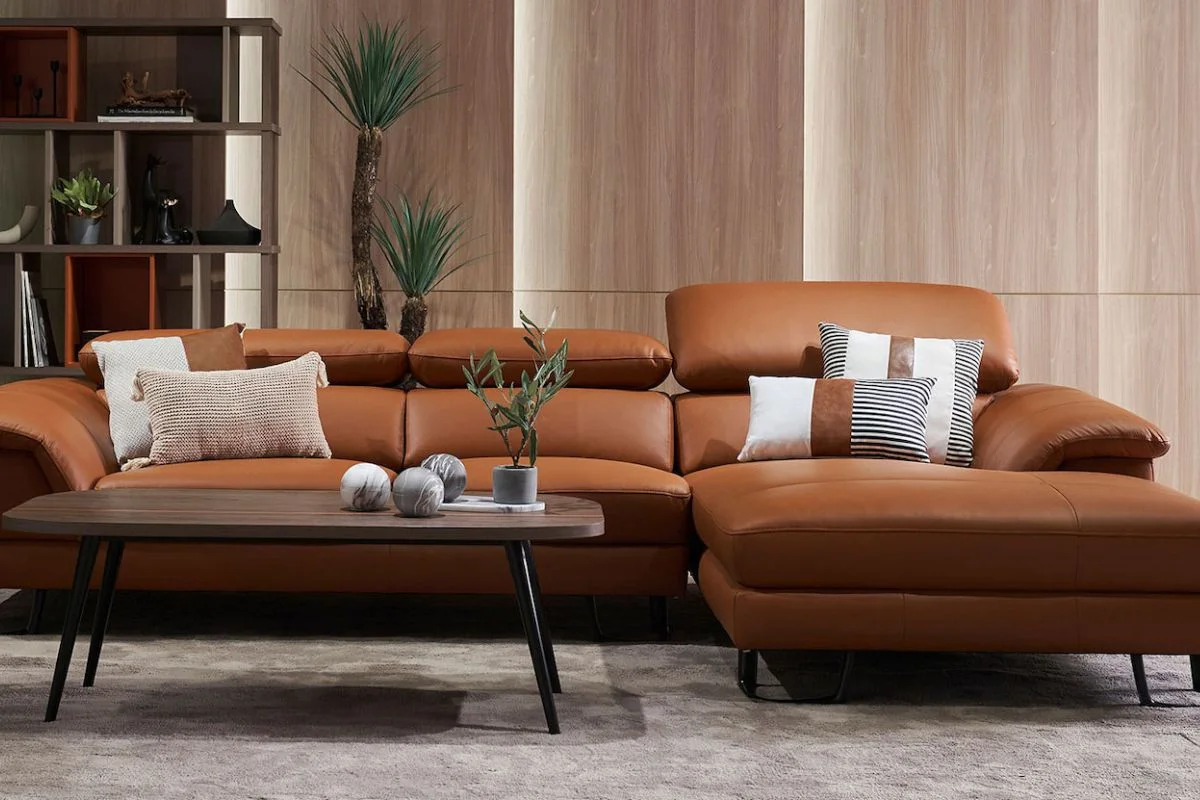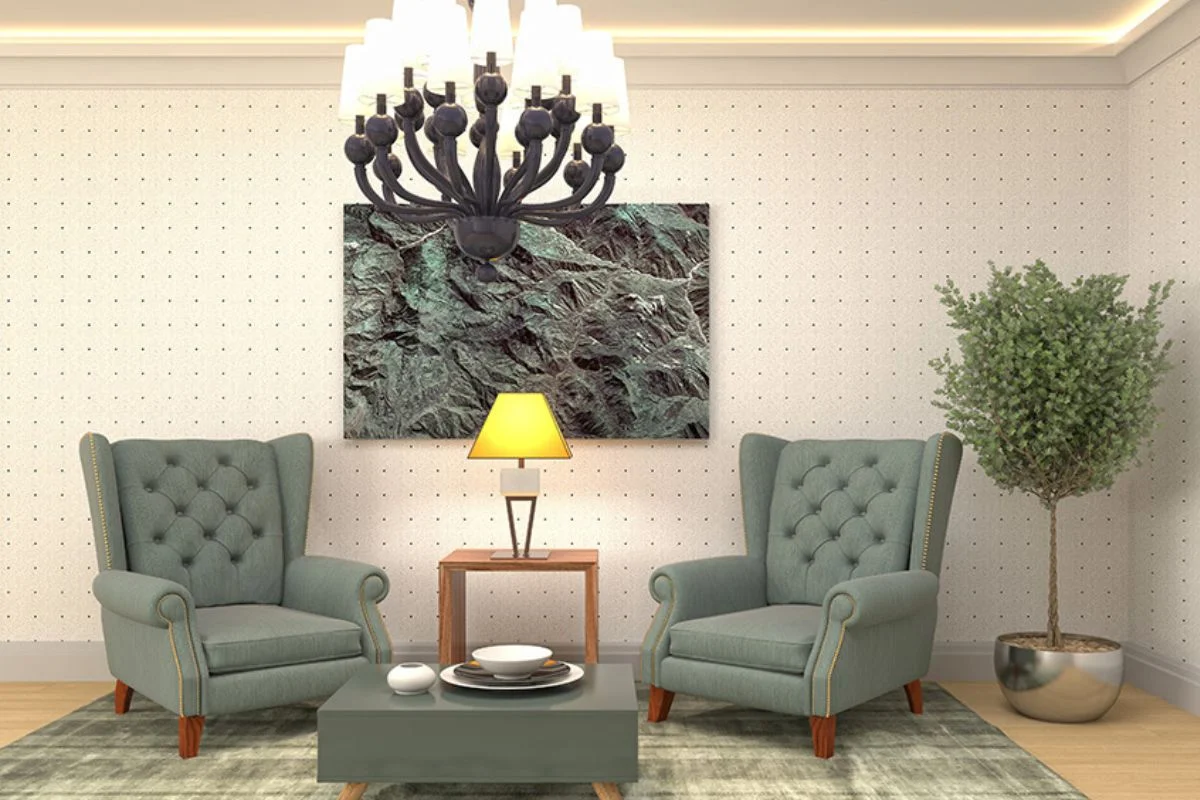
Your home is a reflection of your personal style and taste, and nothing quite showcases that like your furniture. Whether it’s a classic sofa, a cozy armchair, or a stylish dining set, the upholstery plays a crucial role in defining the look and feel of your living space. But what if your furniture could tell an even more unique story?
Enter custom furniture upholstery – the art of transforming ordinary pieces into extraordinary works of art. With custom upholstery, you have the opportunity to breathe new life into old furniture, infusing it with personality and charm that perfectly complements your home décor.
In this guide, we’ll explore the world of custom furniture upholstery and how it can revitalize your home. From choosing the perfect fabrics to working with skilled craftsmen, you’ll discover how to create bespoke pieces that are as functional as they are beautiful. So, get ready to unleash your creativity and elevate your home with the timeless elegance of custom furniture upholstery.
Overview of the Significance of Furniture Upholstery in Interior Design
Furniture upholstery serves as the fabric or leather covering that adorns our sofas, chairs, and other pieces of furniture, playing a pivotal role in the overall aesthetic and functionality of interior spaces. Beyond merely providing a surface to sit or rest upon, upholstery has a profound impact on the atmosphere, comfort, and style of a room.
Enhancing Aesthetic Appeal: Upholstery fabric or leather serves as a canvas for expressing style and personality within a space. Whether it’s a bold patterned fabric or a sleek leather finish, the choice of upholstery can significantly influence the visual impact of furniture, complementing existing decor or serving as a focal point.
Adding Comfort and Softness: Beyond aesthetics, upholstery contributes to the tactile experience of furniture. The softness and cushioning provided by upholstery materials enhance comfort and invite relaxation, making upholstered furniture a desirable choice for lounging, socializing, or simply unwinding after a long day.
Setting the Tone for Ambiance: The colors, textures, and patterns of upholstery have the power to set the tone and mood of a room. From creating a cozy and inviting atmosphere with plush, velvet upholstery to infusing a sense of sophistication with sleek leather finishes, upholstery plays a key role in shaping the ambiance of interior spaces.
Personalization and Customization: Upholstered furniture offers endless opportunities for customization, allowing individuals to tailor pieces to their specific tastes and preferences. Whether it’s selecting a favorite fabric, incorporating unique patterns, or opting for contrasting piping details, upholstery enables homeowners to create truly personalized and one-of-a-kind furniture pieces.
Functional Versatility: In addition to its aesthetic and comfort-enhancing qualities, upholstery also serves practical functions such as protection and insulation. Upholstered furniture provides a barrier against wear and tear, spills, and stains, prolonging the lifespan of the underlying frame and ensuring durability over time.
Definition and Purpose of Furniture Upholstery
Furniture upholstery refers to the process of covering furniture frames with padding, fabric, or leather to enhance comfort, aesthetics, and durability. Upholstery serves as both a decorative and functional element, transforming plain furniture pieces into stylish and comfortable fixtures within interior spaces.
Definition: Upholstery involves attaching fabric or leather to the frame of furniture, typically using padding or cushioning materials to provide comfort and support. This process can include covering various components of furniture, such as seats, backs, arms, and even headboards, with fabric or leather upholstery.
Purpose:
Enhancing Comfort: One of the primary purposes of upholstery is to make furniture more comfortable for sitting or lounging. Cushioned padding and soft fabrics provide a plush and inviting feel, ensuring a comfortable experience for users.
Adding Aesthetic Appeal: Upholstery fabric or leather comes in a wide range of colors, patterns, and textures, allowing homeowners to customize furniture to suit their personal style and complement existing decor. Upholstered furniture serves as a visual focal point, enhancing the overall aesthetic of interior spaces.
Improving Durability: Upholstery materials not only enhance comfort and aesthetics but also contribute to the durability and longevity of furniture pieces. Fabric or leather upholstery provides a protective layer that helps prevent wear and tear, stains, and damage to the underlying frame, thereby extending the lifespan of furniture.
Sound Absorption and Insulation: Upholstered furniture can also contribute to sound absorption and insulation within a room, helping to reduce noise levels and create a more comfortable and inviting environment.
Types of Furniture Upholstery Fabrics and Materials
When it comes to furniture upholstery, there is a wide array of fabrics and materials to choose from, each with its own unique characteristics and benefits. Understanding the different types of upholstery fabrics and materials can help you make informed decisions when selecting furniture for your home. Here are some common options:
Cotton: Cotton upholstery fabric is soft, breathable, and durable, making it a popular choice for everyday furniture pieces. It comes in a variety of colors and patterns and is relatively easy to clean, although it may be prone to wrinkling and fading over time.
Linen: Linen upholstery fabric is lightweight, breathable, and has a natural texture that adds a casual and relaxed vibe to furniture. It is often used for slipcovers, accent chairs, and other pieces where a more laid-back look is desired. Linen can be prone to wrinkling and staining, so it may require more maintenance compared to other fabrics.
Polyester: Polyester upholstery fabric is known for its durability, resistance to wrinkles and fading, and ease of cleaning. It comes in a wide range of colors and patterns and is often blended with other fibers to enhance its performance. Polyester upholstery is a practical choice for high-traffic areas or households with pets and children.
Velvet: Velvet upholstery fabric is luxurious, soft, and has a rich texture that adds a touch of elegance to furniture pieces. It comes in a variety of colors and can create a dramatic statement in any room. Velvet upholstery may require special care to maintain its plush appearance and prevent crushing or matting.
Leather: Leather upholstery is prized for its durability, luxurious feel, and timeless appeal. It comes in various grades and finishes, including full-grain, top-grain, and bonded leather. Leather upholstery is easy to clean and becomes softer and more supple over time, making it a long-lasting investment for furniture.
Microfiber: Microfiber upholstery fabric is made from tightly woven synthetic fibers that mimic the look and feel of suede. It is durable, stain-resistant, and easy to clean, making it an ideal choice for families with children or pets. Microfiber upholstery is available in a wide range of colors and textures, making it versatile for different design styles.
Chenille: Chenille upholstery fabric is soft, plush, and has a velvety texture that adds warmth and coziness to furniture pieces. It is durable and comes in a variety of colors and patterns, making it suitable for both traditional and contemporary interiors. Chenille upholstery may require regular vacuuming to maintain its appearance.
Upholstered Furniture for Different Rooms and Purposes
Upholstered furniture plays a vital role in every room of the house, adding comfort, style, and functionality to various living spaces. From the cozy ambiance of the living room to the elegant setting of the dining room, different types of upholstered furniture serve specific purposes and contribute to the overall aesthetic appeal of each room. Here’s a closer look at how upholstered furniture is utilized in different rooms and for different purposes:
Living Room:
- Sofas and Sectionals: Upholstered sofas and sectionals are the centerpiece of the living room, providing ample seating for relaxing, socializing, and entertaining guests. They come in various styles, sizes, and upholstery fabrics, allowing homeowners to create a comfortable and inviting seating area that reflects their personal taste and lifestyle.
- Armchairs and Accent Chairs: Upholstered armchairs and accent chairs add versatility and style to the living room, serving as cozy spots for reading, lounging, or enjoying a cup of coffee. They can be placed individually or in pairs to create a balanced and cohesive seating arrangement, complementing the sofa and other furniture pieces.
- Ottomans and Poufs: Upholstered ottomans and poufs serve as multifunctional pieces of furniture in the living room, providing extra seating, footrests, and storage solutions. They come in various shapes, sizes, and upholstery fabrics, allowing homeowners to add personality and functionality to their living space.
Dining Room:
- Upholstered Dining Chairs: Upholstered dining chairs add comfort and sophistication to the dining room, making mealtime gatherings more enjoyable and relaxed. They come in a variety of styles, from traditional to modern, and can be upholstered in fabric or leather to complement the dining table and decor.
- Dining Benches: Upholstered dining benches offer a versatile seating option for dining rooms with limited space or for creating a casual and inviting atmosphere. They provide ample seating for multiple guests and can be tucked neatly under the dining table when not in use, maximizing space and flexibility.
Bedroom:
- Upholstered Headboards: Upholstered headboards add style and comfort to the bedroom, serving as a focal point of the room’s decor. They come in various designs, sizes, and upholstery fabrics, allowing homeowners to create a luxurious and inviting sleep sanctuary.
- Upholstered Benches and Ottomans: Upholstered benches and ottomans provide functional seating and storage solutions in the bedroom, serving as stylish accents at the foot of the bed or along the walls. They offer a convenient spot for putting on shoes, storing extra blankets or pillows, and adding a touch of elegance to the room’s decor.
Maintenance and Care for Upholstered Furniture
Proper maintenance and care are essential for preserving the beauty, comfort, and longevity of upholstered furniture. With regular attention and the right cleaning techniques, you can keep your upholstered pieces looking fresh and inviting for years to come. Here are some tips for maintaining and caring for upholstered furniture:
Vacuum Regularly: Use a vacuum cleaner with a soft brush attachment to remove dust, dirt, and debris from the surface of upholstered furniture. Pay special attention to crevices, seams, and tufting where dirt tends to accumulate.
Spot Clean Stains Promptly: Attend to spills and stains immediately to prevent them from setting into the fabric or leather. Blot the stain with a clean, absorbent cloth or paper towel to soak up excess liquid, then gently dab the area with a mild cleaning solution or upholstery cleaner recommended by the manufacturer.
Test Cleaning Products: Before using any cleaning product or solution on upholstered furniture, it’s essential to test it in an inconspicuous area first to ensure that it does not cause damage or discoloration. Follow the manufacturer’s instructions carefully and avoid using harsh chemicals or abrasives that may harm the fabric or leather.
Use a Fabric Protector: Consider applying a fabric protector or upholstery protector to newly upholstered furniture to help repel spills, stains, and dirt. These protective treatments create a barrier between the upholstery and potential contaminants, making cleaning and maintenance easier in the long run.
Rotate Cushions and Pillows: Regularly rotate and flip cushions and pillows to distribute wear and maintain their shape evenly. This helps prevent premature sagging and prolongs the lifespan of upholstered furniture.
Avoid Direct Sunlight: Prolonged exposure to direct sunlight can cause fabric and leather upholstery to fade, deteriorate, or become discolored over time. Position upholstered furniture away from windows or use curtains, blinds, or UV-blocking window film to protect it from harmful UV rays.
Professional Cleaning: Consider hiring a professional upholstery cleaning service to deep clean upholstered furniture periodically, especially if it is heavily soiled or stained. Professional cleaners have the expertise and equipment to safely and effectively clean various types of upholstery fabrics and materials.
Regular Maintenance: Make upholstery maintenance a regular part of your cleaning routine, scheduling periodic vacuuming, spot cleaning, and maintenance treatments to keep upholstered furniture looking its best year-round.
Conclusion
In conclusion, proper maintenance and care are essential for preserving the beauty, comfort, and longevity of upholstered furniture. By following the tips outlined in this guide, you can keep your upholstered pieces looking fresh and inviting for years to come, ensuring that they continue to enhance the comfort and style of your living spaces.




